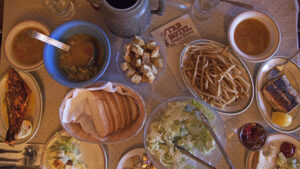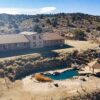If you’re new to Northern Nevada or unfamiliar with the region, you may be surprised about the area’s rich Basque history. Basque culture has been a part of Nevada since the 1800s, and its impacts can be seen throughout Northern Nevada. One of Reno’s oldest restaurants is Louis’ Basque Corner, which to this day, dishes up Basque cooking and the state’s almost official drink, the Picon Punch. The University of Nevada, Reno, even has a dedicated center to Basque studies. Want to know more? Here’s a short primer on Basque history and its impact on the region.
Basque history in Northern Nevada
The Basque people are indigenous to an area of Europe called the Basque Country, which straddles parts of north-central Spain and south-western France. They began migrating to Nevada in the 1870s, and today the Silver State ranks No. 3 for total Basque population, after California and Idaho.
Nevada’s expansive public land was attractive to most Basque immigrants since they were often ranchers, said Joxe Mallea-Olaetxe, a writer and former associate professor at the University of Nevada, Reno. He has done extensive research on Basque carvings on aspen trees in the West and is the author of “Speaking through the Aspens.” Many Basque people began sheepherding in Nevada and other parts of the west coast, earning them the nickname “The Sheepherders of the West.” At the time, wool was a government-controlled market, and it offered many rural immigrants a chance for a prosperous business, Mallea-Olaetxe said.
When the Comstock Load resulted in thousands of miners arriving in Northern Nevada searching for precious metals, sheepherding became even more important. Miners needed good meat and durable clothing—and mutton and wool fit the bill perfectly. While cowboys and cattle ranchers get a lot of attention, historically, there were twice as many sheep as there were cows in the region.
Where to find Basque culture in Nevada

Today, Basque culture is a vibrant part of Nevada. The University of Nevada, Reno, also has a Center for Basque Studies. Starting in 1967, it began as a research program and has evolved into an extensive library and publishing center.
Many famous Nevadans can trace their roots back to Basque culture, including former Nevada Governor and U.S. Senator Paul Laxalt and his brother, Robert Laxalt, a lauded author. Both were sons of Basque sheepherders.
To get a taste of Basque culture, try a meal and a Picon Punch at Basque restaurants across Northern Nevada, where sheep camp fare is served family-style.
In the summer, there are Basque festivals filled with dancers in colorful costumes jumping and twirling to accordion music.
“Watching 4 and 5 year-olds with red berets dancing and frolicking is a sight to see!” Mallea-Olaetxe says. These restaurants and festivals bring a little slice of their homeland, the Pyrenees Mountains, to Northern Nevada.
To get a feeling of what Basque living was like in Nevada’s early days, you only need to step outside. You can still find thousands of arborglyphs, tree carvings that Basque ranchers left on aspen trees to write their history, all over Wild Nevada. Recently the U.S. Forest Service decided to restore and protect several sheep camps and bread ovens used by the Basque people.
“In Nevada and the Sierra, an aspen grove can be more than a forest,” Mallea-Olaetxe said. “It may be an outdoor museum of Basque sheepherder legacy, a unique western American cultural patrimony.”



